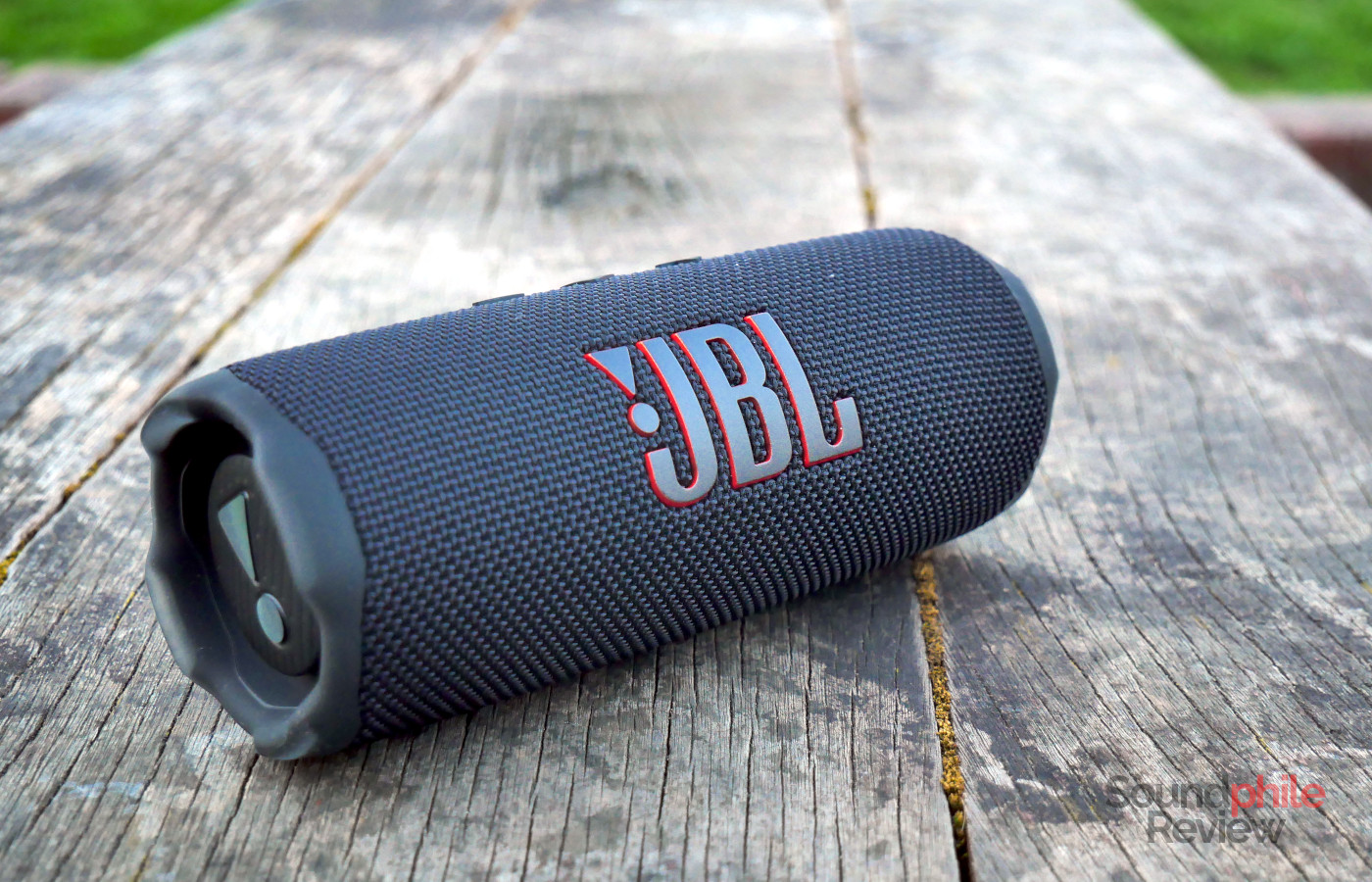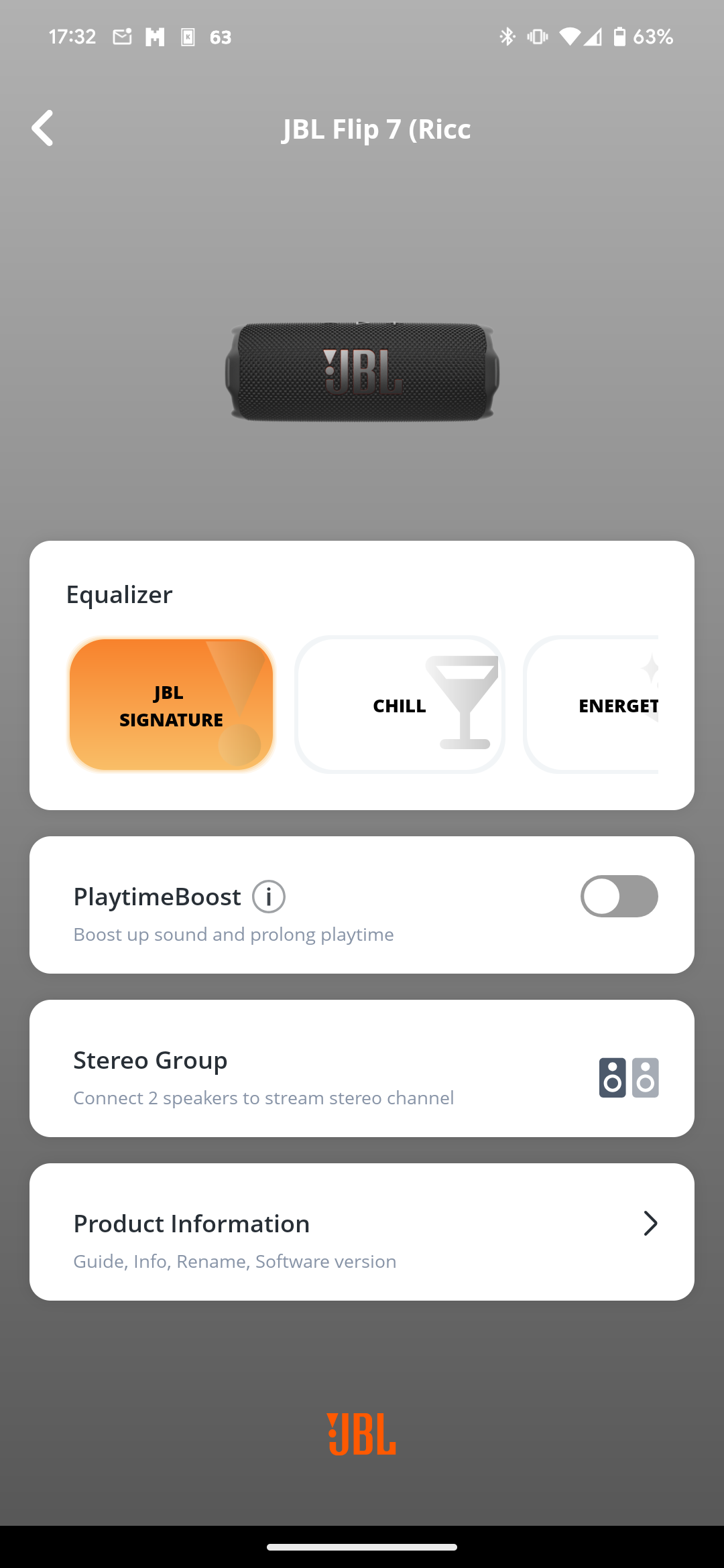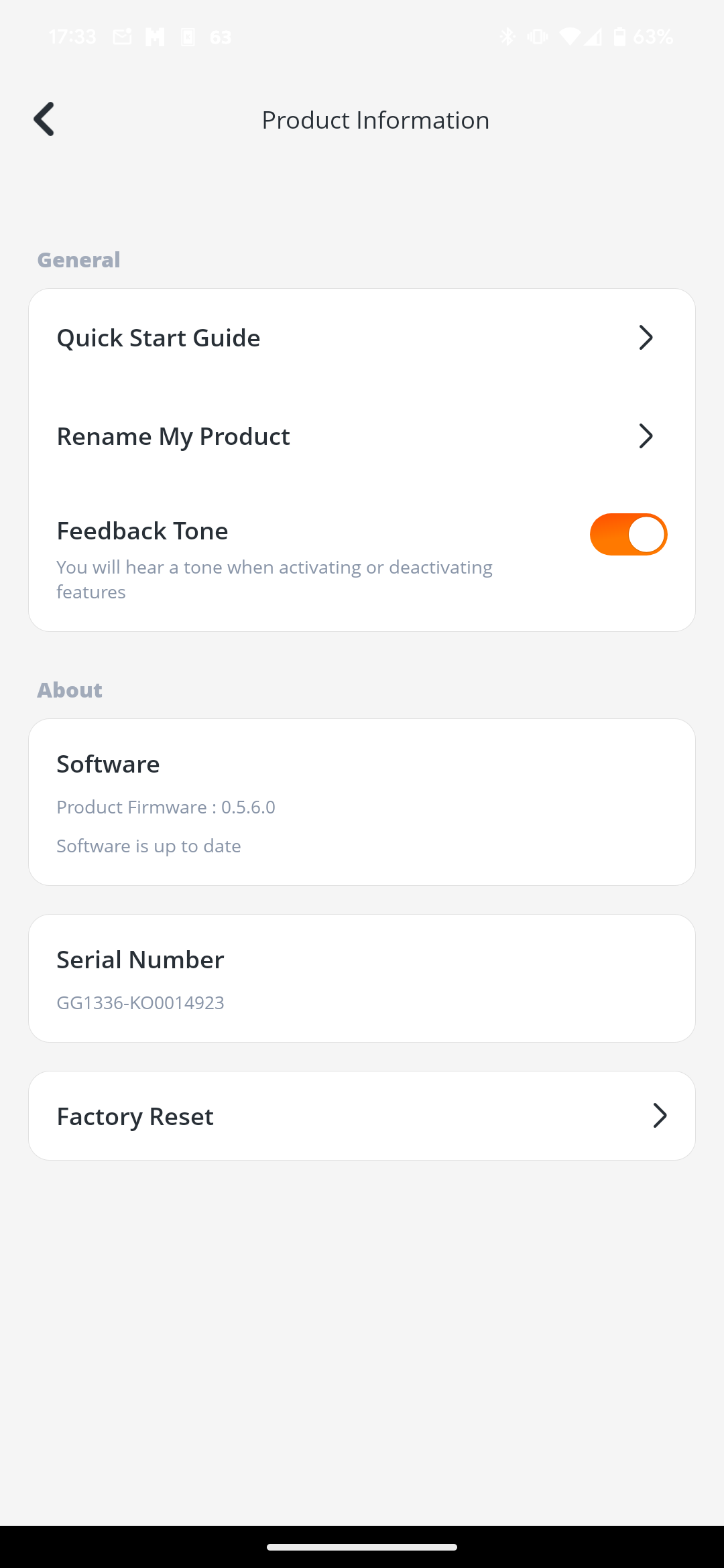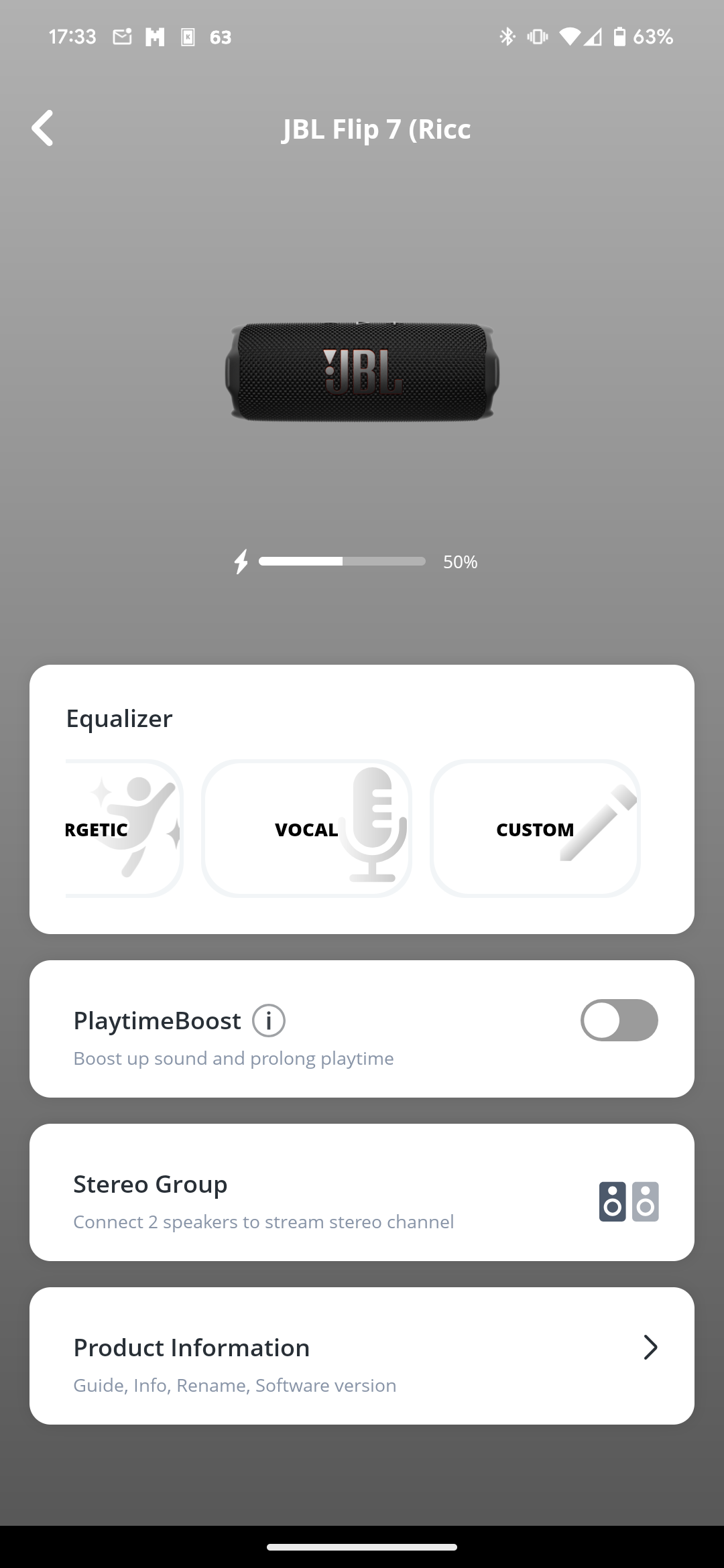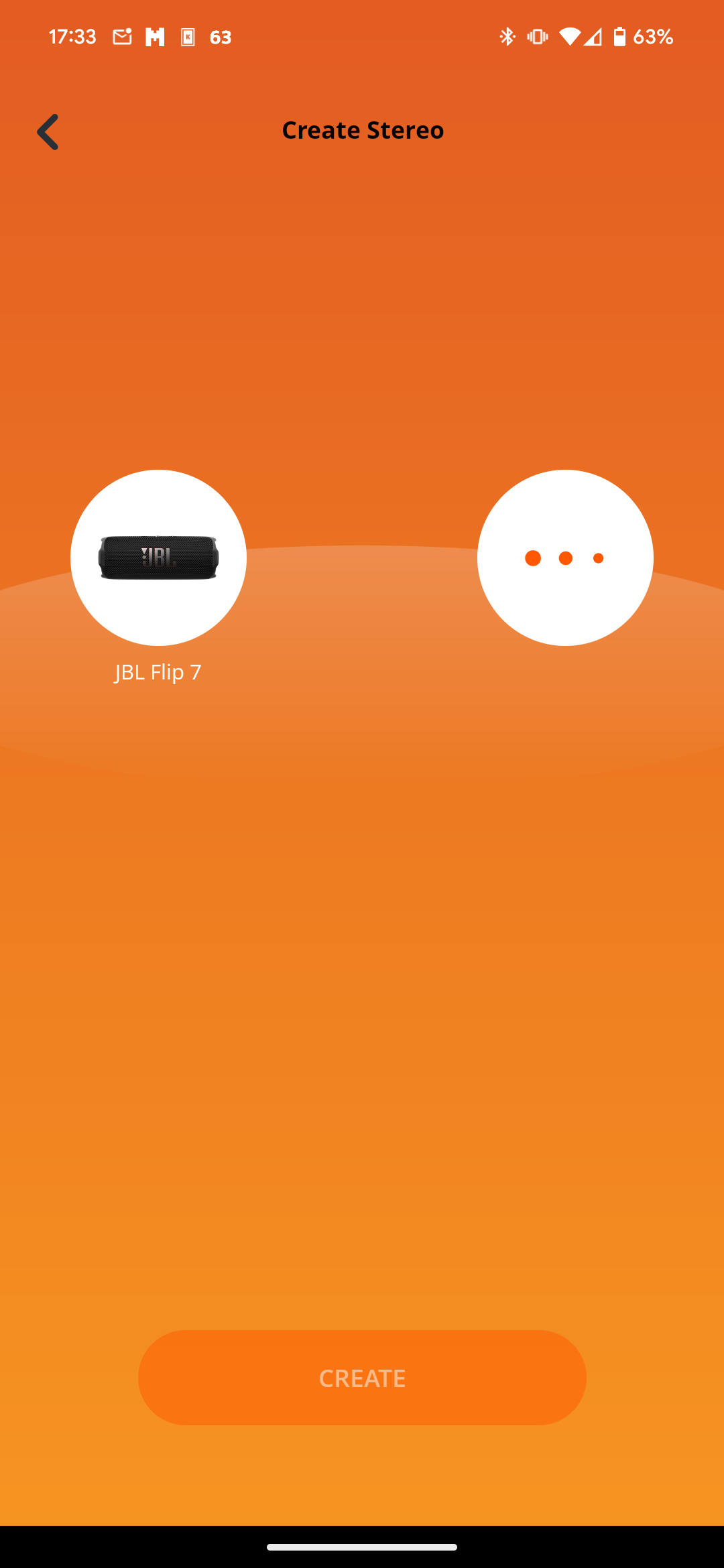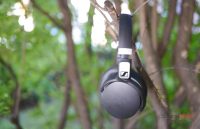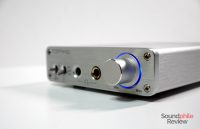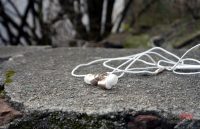At an event in London, JBL announced their new portable speaker line-up, which includes the JBL Flip 7, latest incarnation of the best-selling Flip series. And when I say “best-selling”, I mean the “25% of the market” sort. The newest version sports better passive radiators as well as an improved design – and the ever-present AI makes an appearance, too.
Disclaimer: JBL kindly gave a free unit to all the attendants in order to write reviews. The Flip 7 is available for $149.99 / £129.99 / €149.99.
TL;DR: recap
| Pros |
Cons |
| + Extremely portable
+ Resistant to falls, dust and water + Much more powerful than size would imply + Playback through USB-C + Nice accessory attachment system |
– Treble is often aggressive
– Midrange is distant and muddy – SBC is the only available codec |
Rating: 6.5/10
Packaging & Accessories
The packaging of the JBL Flip 7 includes the speaker itself, a manual, a warranty card as well as a carabiner which you can attach in place of the fabric loop that’s installed by default.
Design & Build
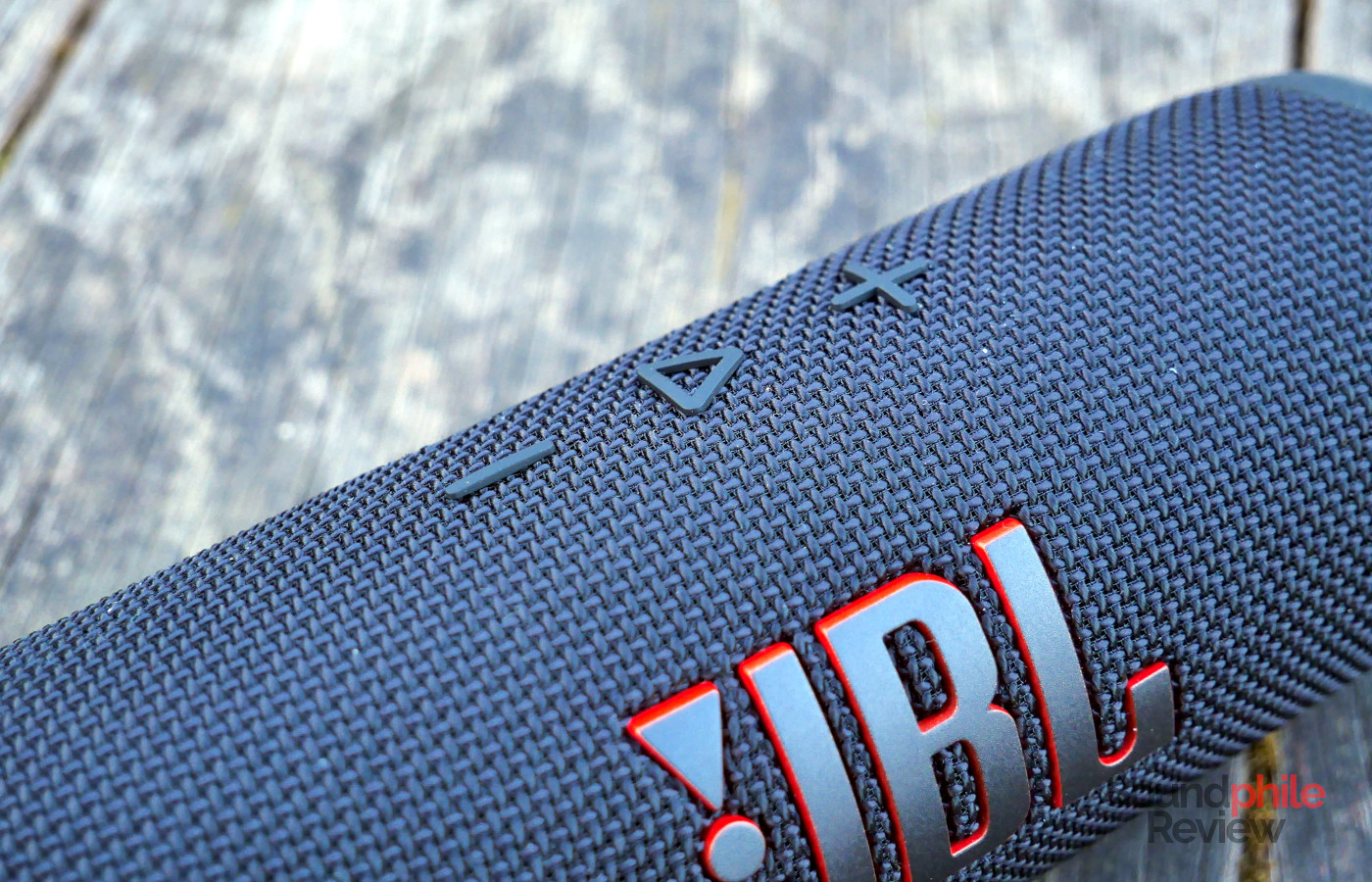
The JBL Flip 7 uses a design that is very similar to that of the JBL Flip 6, with a plastic body covered by a layer of fabric. The “front” has the JBL logo in metal being quite prominently displayed. On the top we find the play/pause button as well as two volume buttons. Going further along the cylinder we find the power button, the Bluetooth button and the Auracast button to pair multiple speakers together. Last, but not least, the USB-C port, the status LED, the loop and the button to expel it. The Flip 7 uses the new PushLock system which pairs the loop and the carabiner with a metal insert that allows you to quickly and easily replace the accessory, depending on what you need.
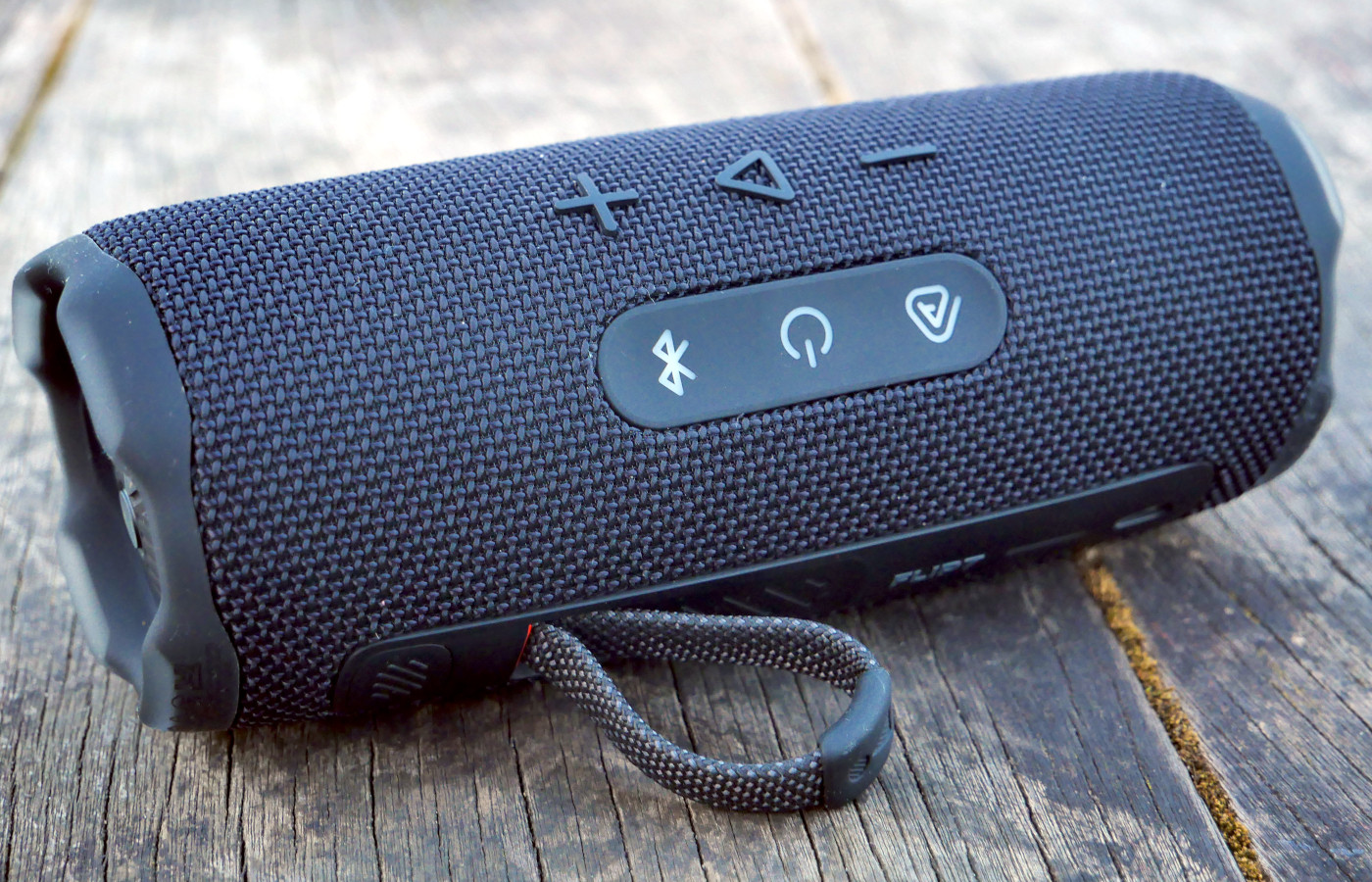
The Flip 7 is quite small at 182.5 x 69.5 x 71.5 mm, in keeping with the Flip line. Its main feature is exactly how small and portable it is, a quality aided by the 560 g weight. Contrary to its predecessors, the Flip 7 boasts a new four-nubs system that uses soft rubber to offer impact protection if your speaker falls; JBL guarantees that the device won’t suffer any harm in falls up to 1 m high. On top of this, the Flip 7 is IP68 certified, which means it can be submerged in water and used in dusty environments without suffering any damage.
Interestingly, the front is wider than the back; this means that if you place the speaker vertically so that it stands on its four nubs, it will be slightly tilted backwards at an angle that’s not too dissimilar to the one it rests at when it’s horizontal.
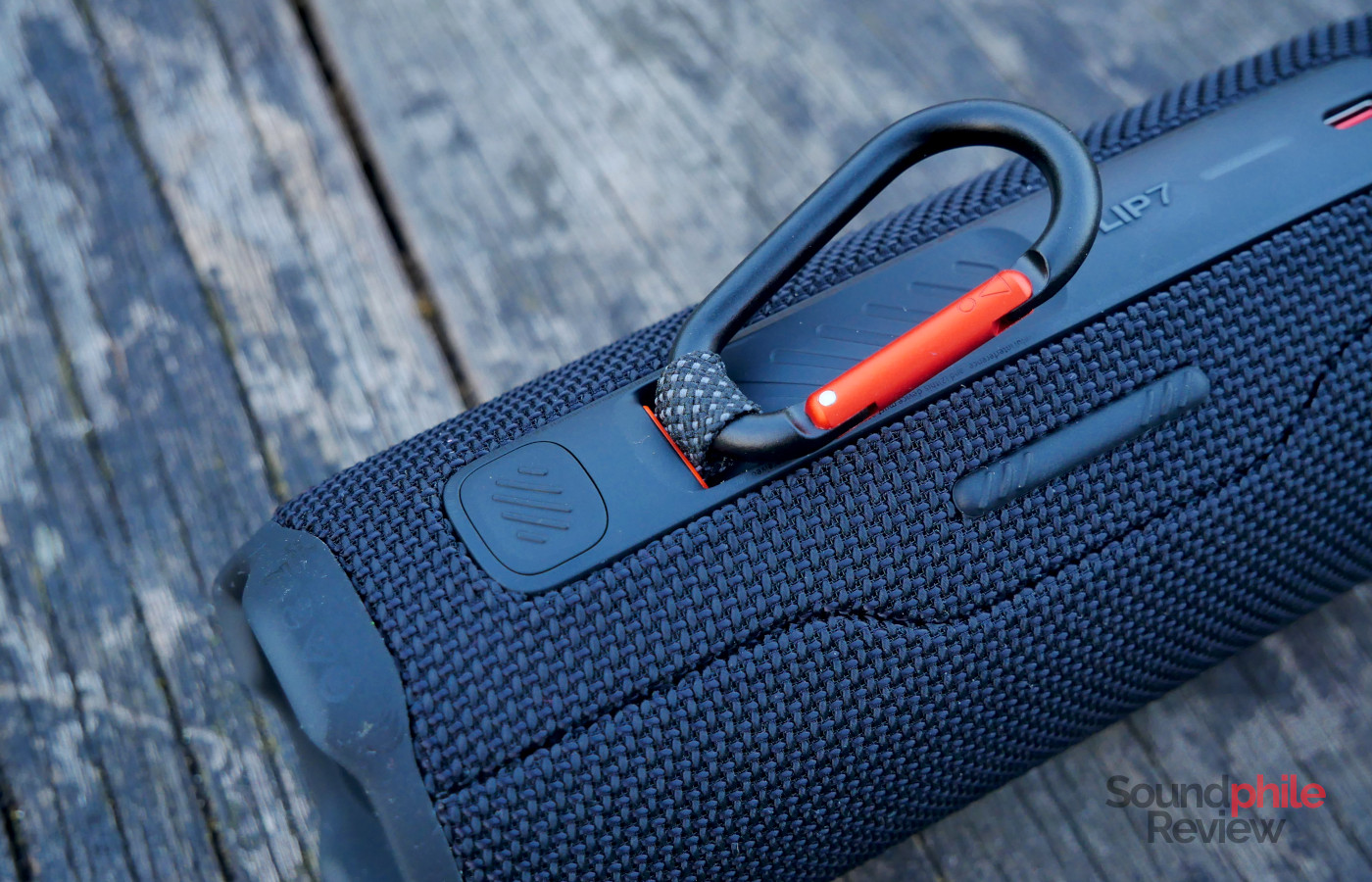
The plastic body, which is made from 77% recycled plastic, is covered with 100% recycled fabric that goes all around the device. An ingenious solution JBL found to keep the Flip 7 at the right orientation when sat on a surface is to put a small rubber nub on the bottom – this way, the speaker does not roll around. This is also aided by the internal weight distribution, which makes the speaker always roll back to its “neutral” position.
Features & Specs
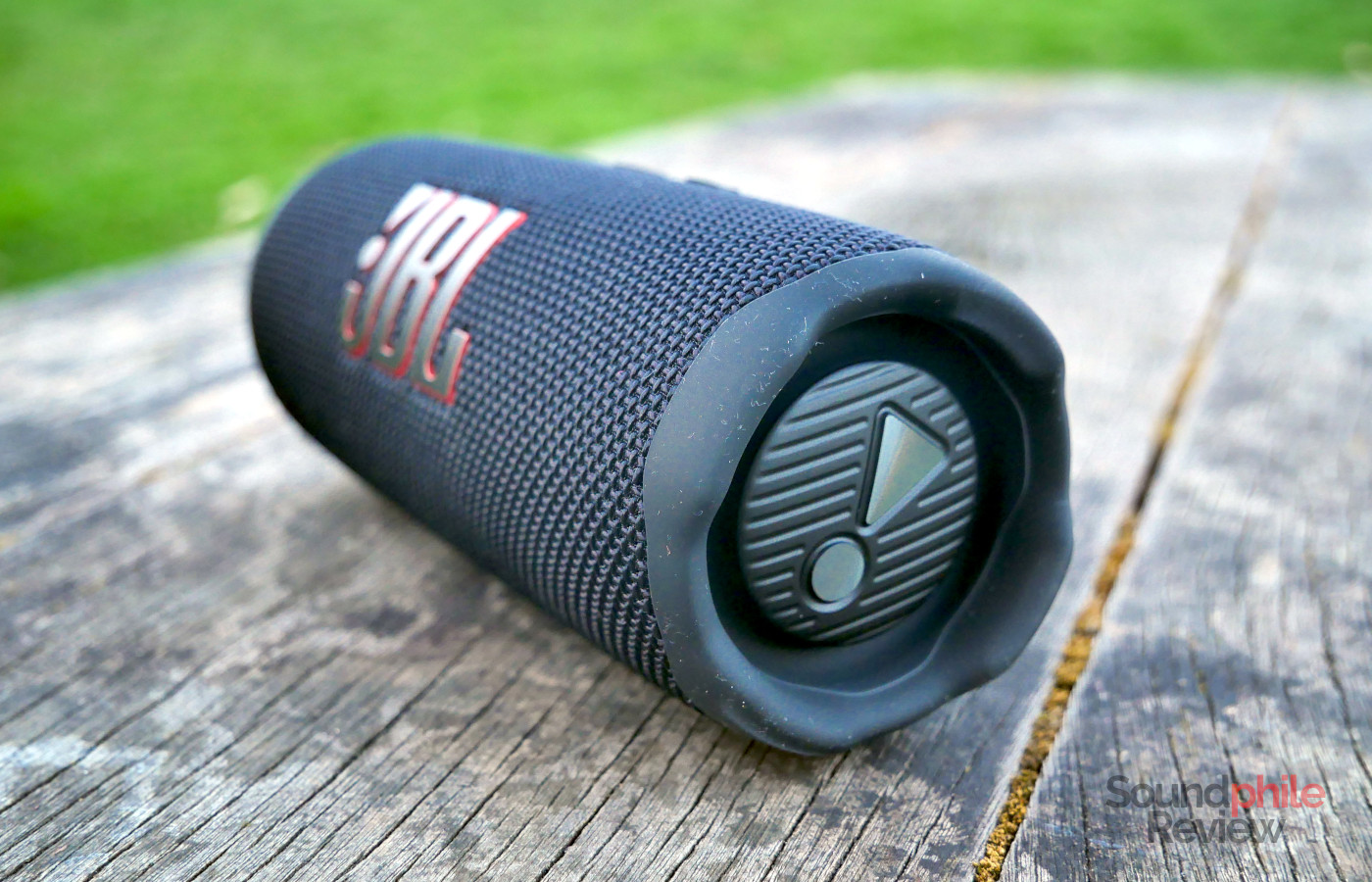
A very interesting point about the JBL Flip 7 is the fact that it uses AI – not the chatbot variety, but the deep learning one. AI is now ever-present, but in this case it is used to automatically adjust the output in real time (i.e., equalise the sound) based on the input and on the state of the drivers. As the electronics know what the drivers are currently reproducing and what they are going to reproduce next, AI is used to analyse the situation and automatically adjust the equalisation in real time, thereby reducing distortion to the minimum possible.
The Flip 7 also supports Auracast to connect to other Auracast-enabled JBL speakers: this allows you, as an example, to pair it with another unit to get a stereo setup, or to pair it with multiple other speakers to have an overall higher volume output.
JBL Flip 7 |
| Frequency response | 60 – 20,000 Hz |
| Power output | 25 W for the woofer, 10 W for the tweeter |
| Maximum SPL | N/A |
| Connections | Bluetooth (5.4), USB-C |
| Codecs | SBC |
| Driver type | 1 woofer, 1 tweeter, two passive radiators |
The JBL Flip 7 sports compatibility with the Bluetooth 5.4 standard with support for the SBC codec – no other codec is available, not even AAC. The company touts the possibility of using a USB-C cable to connect the speaker to a computer and play music that way, but I haven’t been able to do so with any of my computers, nor with my phone.
Battery Life
JBL claims that the Flip 7 is able to provide up o 16 hours of music reproduction, 2 of which in its battery saving mode. I can attest that the figures are realistic.
Software
The JBL Flip 7 comes with the JBL Portable companion app, which allows you to check remaining battery charge, change the equalisation (which offers seven bands to play with), use the PlaytimeBoost feature which prolongs battery life, group up speakers, as well as update the firmware and rename the device. The Flip 7 supports quick pairing with Android devices, so your phone will automatically offer pairing once you turn on the speaker.
Sound
I tested the JBL Flip 7 by connecting it to both my Google Pixel 7 Pro phone, as well as to my laptop (using both Bluetooth and a USB-C cable).
As you can legitimately expect from a speaker so small, sound quality is acceptable, but the frequency response is far from the ideal neutrality. This is also due to what appears to be a precise choice by JBL: bass and treble are boosted, which is (again) expected. One element that really surprised me is the volume that the Flip 7 is able to produce: it is very high, so much so that at half the maximum volume it is already way too loud. The subjective impression is that there isn’t much distortion, either: the AI-powered equalisation appears to work well and to achieve its target.
As you can imagine, a speaker that only has a single woofer and a single tweeter doesn’t offer any soundstage nor any imaging – everything sounds exactly like it’s coming from the speaker itself, no psychoacoustics illusions! In terms of instrument separation, the JBL Flip 7 fares a lot better at higher volumes, whereas it tends to conflate everything at lower levels.
Bass is quite prominent and even shows some depth, which is significant given the small size of the device. While it doesn’t hit sub-bass depths, it does have good extension that helps it have good “oomph” – which makes the Flip 7 sound larger than it actually is. It does behave rather well when it comes to speed and transients: they’re quite fast and snappy, and far better than I expect any device of this size to be. In fact, even hard-hitting bass sounds convincing due to the speed.
Midrange is the weak spot of the Flip 7, as it is quite recessed and often sounds garbled and distant. It is clear and clean enough when it is the main thing being played, but as soon as there are bass and treble involved, it becomes muddy and distant. In a track like H.U.V.A. Network’s Cobalt, the midrange is completely suffocated by bass and treble and is barely audible, while it should be relatively prominent (or, at least, audible). Voices, both male and female, sound natural enough as long as they are more or less alone, but they suffer a lot and become distant and barely audible the moment there is some bass. Instrument separation is not great in the midrange, which is easy to hear in layered tracks such as Dimmu Borgir’s The Serpentine Offering (despite it being a compressed track made to be listened on low-end speakers!). As a consequence of all this, detail is lacking and allows you to get the gist of what is going on, without much more to it. Overall it’s a very mixed bag, although it is mostly due to the tuning choice of JBL and the small size of the device.
Treble is very emphasised, with a large spike in the lower section that makes cymbals especially prominent, almost to the point of being fatiguing. This applies to any tracks I’ve listened on the Flip 7: the emphasis is meant to give the speaker that “sizzle” that goes well with contemporary, mainstream music, but it becomes aggressive with almost any other genre. In fact, treble is often so prominent you can hear it over everything else; as an example, take Aes Dana’s Conditioned, where the cymbals drown out every other instrument. There isn’t much extension, either, as the peak is followed by troughs that make the middle and especially the upper regions recessed. Therefore there’s not much “air” to be found here. There is, however, enough detail that you can hear individual cymbal hits, even in moderately complex tracks.
Final Thoughts
The JBL Flip 7 was a long-awaited sequel to a very successful line of portable speakers – in fact, the most successful line of portable speakers. It is an overall decent speaker for its size, able to pump out music a lot more loudly than its small size would suggest it’s possible, and it is aided in this by the baked-in AI system that JBL has developed. Unlike previous models, it also supports wired connectivity through its USB-C port, which is quite a welcome addition as it adds more options to its usage. There are a few “buts”, mostly related to the way JBL has decided to tune the Flip 7: it is very much a speaker that emphasises bass and treble, leaving little space for the midrange. While this can work with contemporary mainstream music, it doesn’t really work for much of everything else. This presumes you don’t want to dabble with EQ, which you actually can using the JBL app, although there is only so much EQ can do.
Whether you should get this speaker, then, heavily depends on what kind of music you want to listen to on it. It is not a balanced device that does everything equally, so it is not something I can recommend to everyone. It is a good choice if you value portability and battery life over sheer sound quality; if you are willing to make some compromises there, it is actually among the good big-name speakers in its category.

